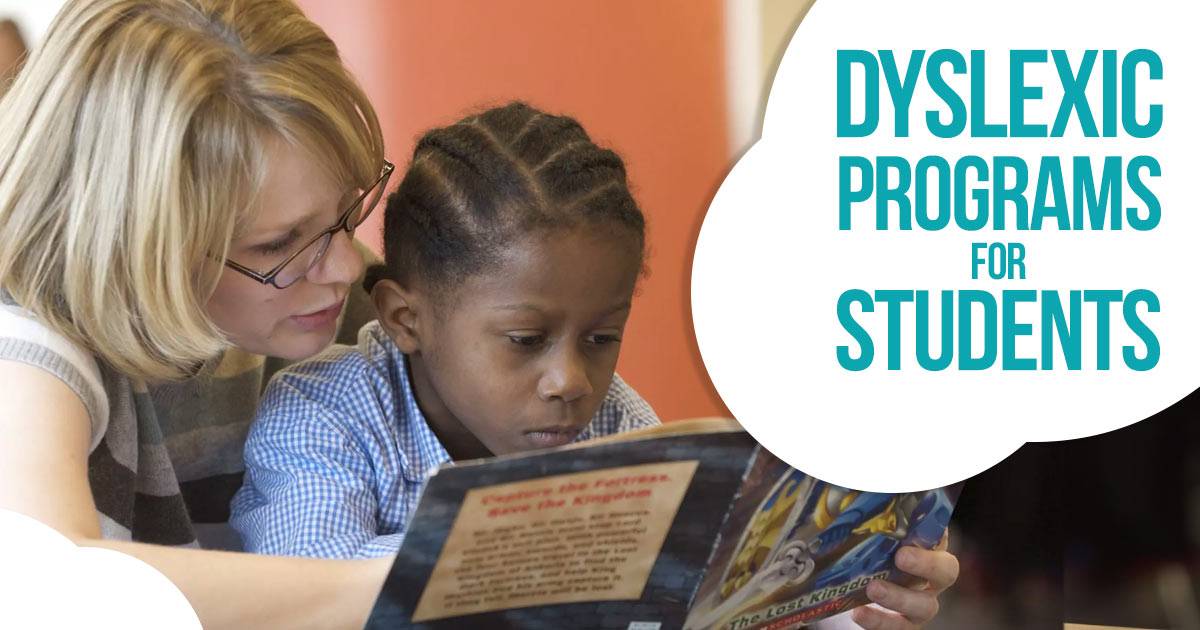How to Teach Dyslexic Students to Read: Teaching Methods and Phonics Programs

Dyslexia is a learning disability that makes it hard for kids to read and spell words correctly. It’s often noticed in the early school years, like kindergarten through second grade, when children start learning to read.
According to the International Dyslexia Association, up to 20% of people have dyslexia, making it one of the most common learning disabilities. Kids with dyslexia may find it hard to break down words, recognize common words by sight, and match sounds with letters. Teachers usually spot these problems when kids don’t improve in reading, even after lots of practice and good teaching. Catching dyslexia early is important because it affects how well kids do in school and how they feel about themselves.
Elementary teachers are key to spotting signs of dyslexia. They might see that dyslexic students have trouble understanding letter sounds, spell poorly, read below their grade level, and avoid reading out loud. Recognizing these signs early helps provide the necessary support to prevent long-term learning issues.
Why Early Reading Intervention for Dyslexic Kids is Crucial
Helping kids with dyslexia early on is very important. Studies, like the one from Frontiers in Education, show that good reading lessons can really help young children with dyslexia improve their reading skills. Here are the main reasons why early intervention matters:
- Improved Reading Skills: Early intervention helps children develop essential reading skills, preventing them from falling behind their peers.
- Boosted Self-Esteem: When kids experience success in reading early on, they build a positive self-image and reduce frustration and anxiety related to learning difficulties.
- Better Academic Performance: Learning to read well early on lays a strong foundation for overall academic success since reading is fundamental to all subjects.
- Long-Term Benefits: Early support can lead to long-term educational and career achievements, enabling children to navigate school and future job opportunities more effectively.
Effective Strategies for Teaching Dyslexic Students
Even with reading challenges, many children with dyslexia can do well in school by using teaching strategies that meet their unique needs. Here are some effective ways to help dyslexic students learn to read:
- Multisensory Instruction: Engage multiple senses like sight, sound, touch, and movement to help kids connect letters and sounds. For example, children can trace letters in sand while saying the sounds or use colored tiles to represent sounds in words.
- Explicit Phonics Instruction: Teach phonics step-by-step, focusing on the relationship between letters and sounds. Break down words into smaller parts (phonemes) and blend them together to form whole words.
- Use Decodable Texts: Provide books that match the phonics patterns kids have learned. This helps reinforce their skills through practice and makes reading more manageable.
- Repetition and Practice: Regular, structured practice helps reinforce learning and build automatic word and sound recognition, making reading smoother over time.
- Technology Aids: Use tools like text-to-speech software and audiobooks to supplement reading practice. These tools make it easier for students to follow along and understand the text they are reading.
- Small Group Instruction: Provide instruction in small groups to offer more personalized attention. This allows teachers to give immediate feedback and tailor lessons to individual student needs.
- Graphic Organizers: Use visual aids like charts and diagrams to help students break down and organize information. Graphic organizers can be particularly useful for understanding story structure and main ideas.
- Interactive Reading: Engage students in interactive reading activities where they can ask questions and discuss the text. This helps build comprehension and makes reading a more active process.
- Positive Reinforcement: Use positive reinforcement to encourage progress and build confidence. Celebrate small victories to motivate students and create a supportive learning environment.
- Consistent Routine: Establish a consistent daily routine for reading lessons. Predictable schedules help students feel secure and understand what to expect, making learning more effective.
Dyslexic Teaching Methods and Phonics Programs
- Orton–Gillingham Approach: This method uses multisensory techniques where kids see, say, and write letters while associating them with sounds. For example, they might write letters in shaving cream while saying the sounds.
- Wilson Reading System: This is a structured literacy program that teaches kids to tap out each sound in a word with their fingers and thumb, helping them break down and understand the word.
- Barton Reading Program: This program uses color-coded tiles to help kids build words, with different colors representing vowels and consonants. This visual and hands-on approach makes learning more engaging.
- Lindamood-Bell Program: This program focuses on developing phonemic awareness and symbol imagery. Techniques include visualizing and verbalizing the sounds and letters, helping children connect spoken language to written text.
- Reading Recovery: An early intervention program designed for first graders struggling with reading. It provides one-on-one tutoring focusing on reading aloud, writing, and comprehension strategies.
- Phono-Graphix: This method emphasizes the connection between sounds and letters through explicit instruction in sound-to-symbol correspondence. The program uses a blend of phonemic awareness activities and direct phonics instruction
- The Spalding Method: This comprehensive language arts program integrates spelling, writing, and reading. It uses explicit instruction in phonics, providing continuous practice through dictation, reading, and writing exercises.
By using these specialized strategies, teachers can help children with dyslexia overcome their reading challenges and succeed academically.
Parents as Key Partners in Supporting Kids with Dyslexia
In conclusion, supporting a child with dyslexia is a team effort involving both teachers and parents. While effective teaching strategies at school are crucial, the involvement and encouragement of parents play an equally important role in improving a child’s reading skills and confidence.
Parents can contribute by creating a reading-friendly environment, being patient and positive, working closely with teachers, using assistive technology, and building their child’s self-esteem. Together, educators and parents can provide the comprehensive support needed to help children with dyslexia overcome reading challenges and thrive academically.
